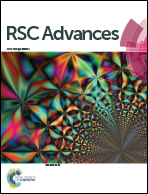Effect of curing conditions on the cutting resistance of fabrics coated with inorganic-powder-reinforced epoxy composite
Abstract
Inorganic powders (IPs), namely, SiO2 and Al2O3, were used as reinforcements and thermosetting epoxy resin was utilized as a matrix to manufacture IP/epoxy preform, which was coated on the surfaces of 2/1 twill woven polyethylene terephthalate (PET) fabrics before the final curing process. The effect of curing conditions, including temperature, time, and IP content, on the physical, mechanical, and cutting resistance properties of pure IP/epoxy composites and PET fabrics coated with IP/epoxy composites were investigated. Results indicated that the cutting resistance of PET fabrics could be greatly improved by coating with IP/epoxy composites. Meanwhile, the cutting resistance of fabrics coated with IP/epoxy composites had a close relationship with the shore hardness of the coated IP/epoxy composites, which could be controlled by the curing conditions and IP content.



 Please wait while we load your content...
Please wait while we load your content...